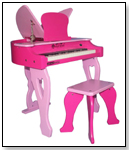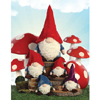|
|
New Emphasis on Tech Toys Helps Classic Companies Stay Relevant It is well known that the use of computers, smartphones, and tablets is on the rise among kids (according to the NPD Group, more than half of kids ages 2-14 are using some kind of smart device at home). With that in mind, this August classic toy company Lionel (maker of Lionel Trains) rolled out an iPad game called "Lionel Battle Train." The game not only allows kids to interact with some of their classic trains in the digital realm - it has also amped up the level of game play, giving kids the ability to blow up and derail "enemy" trains. But do toy trains really need to be digitized and turned violent? Can't kids get a full play experience out of building train tracks, surrounding them with toy and model villages, and running their trains through their creations? Dr. Toy (Stevanne Auerbach) seems to think so. In an article on SFGate, she argued, "I just think kids need to get dirty and play in the mud and go out into the woods and play jump rope and have real experiences before (toys) become electrified and digitized and not balanced." In the same article, however, CEO of Global Toy Experts Richard Gottleib countered, "Children today don't experience the world as either virtual or real. It's all real to them." While kids can certainly benefit from online games and apps that encourage the development of new skills, like building strategy and learning how to use technology effectively (which will be an inevitable part of their adult lives), physical toys provide many benefits that digital toys cannot. Especially for younger children, interacting with physical toys is essential for developing manual dexterity, fine and gross motor skills, and sensory stimulation. Physical toys also encourage more face-to-face interaction between kids, their peers, and adults, which helps them to develop crucial social skills. However, interactive toys, like Skylanders from Activision or the new Disney Infinity, are surefire hits that combine a physical toy with an online element. Seeing the success of such games, some classic toy manufacturers may well have to compromise and go a similar route in order to keep their brand relevant. Either way, parents, toy makers, and toy retailers have a big decision to make this holiday season. Will we be throwing our money behind toys that provide kids with a tactile, physical experience? Or toys that engage kids on a screen?  Writer's Bio: Justina Huddleston graduated Magna Cum Laude from Emerson College with a BA in Writing, Literature, and Publishing in 2009. After graduating she was the on-site director of the Boston Children's Museum gift store for a year, selling educational, developmental, and creative activity toys that tied in with the museum's exhibits. Justina also interned at children's book publisher Candlewick Press before moving from Boston to Los Angeles, where she is now Editorial Director of TDmonthly Magazine. Read more articles by this author Writer's Bio: Justina Huddleston graduated Magna Cum Laude from Emerson College with a BA in Writing, Literature, and Publishing in 2009. After graduating she was the on-site director of the Boston Children's Museum gift store for a year, selling educational, developmental, and creative activity toys that tied in with the museum's exhibits. Justina also interned at children's book publisher Candlewick Press before moving from Boston to Los Angeles, where she is now Editorial Director of TDmonthly Magazine. Read more articles by this author |
| ||||||||||||||||||||||||||||||||
Disclaimer Privacy Policy Career Opportunities
Use of this site constitutes acceptance of our Terms of Use.
© Copyright 2025 PlayZak®, a division of ToyDirectory.com®, Inc.



